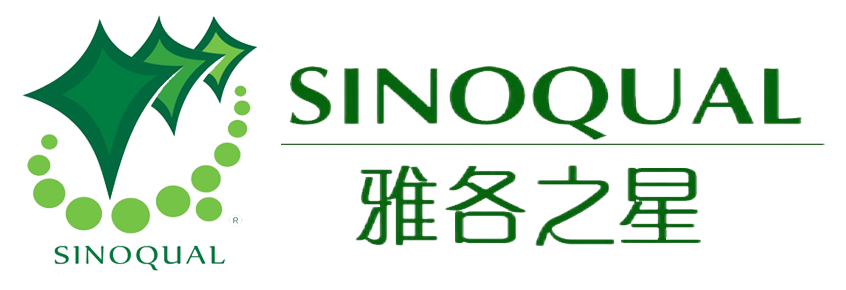The global beauty industry is undergoing a transformation as consumers increasingly demand products that demonstrate transparency, ethical sourcing, and ingredient purity...
General Guidelines for the Use of the Term "Halal" - Codex Alimentarius Commission (CAC)
2025-05-15
Use the term "HalalGeneral Guidelines
Codex Alimentarius Commission CAC/GL 24 - 1997 [27]
The Codex Alimentarius Commission recognizes that there may be subtle differences of opinion regarding the interpretation of lawful and unlawful animals and slaughter laws according to different schools of Islamic thought. Therefore, these general guidelines are subject to interpretation by the relevant authorities of the importing country. However, certificates issued by the religious authorities of the exporting country should, in principle, be accepted by the importing country, unless the importing country provides justification for other specific requirements.
1 scope
1.1This guideline recommends the use ofHalalActions to be taken when making a statement.
1.2This guide is intended for“General Standard for the Labelling of Prepackaged Foods”Terms defined in the claim“Halal”and equivalent terms, including their use in trademarks, brand names, and corporate names.
1.3These guidelines are intended to supplement the Codex Alimentarius General Guidelines on Food Claims but do not replace any prohibitions contained therein.
2 definition
2.1 HalalFood is food that is permitted by Islamic law and should meet the following conditions:
2.1.1Does not contain or include anything that is considered illegal under Islamic law;
2.1.2Not using any equipment or facilities that are not in compliance with any Islamic law for preparation, processing, transportation or storage;and
2.1.3During preparation, processing, transportation or storage, there is no direct contact with2.1.1and2.1.2any food.
2.2Despite the above2.1Article 1:
2.2.1 HalalFood can be produced inHalalFood is prepared, processed or stored in different sections or production lines of the same place, but necessary measures must be taken to preventHalalFood and NonHalalFood contact;
2.2.2 HalalFood may be prepared, processed, transported or stored usingHalalFood facilities, provided that proper cleaning procedures are implemented in accordance with Islamic requirements.
3 “Halal”Standards for the use of the term
3.1Legal Food
HalalThe term can be used for foods that are considered lawful. Under Islamic law, all sources of food are lawful, except the following, including their products and derivatives, which are considered haram:
3.1.1Foods of animal origin
(a) Pigs and wild boars.
(b) Dogs, snakes and monkeys.
(c) Carnivorous animals with claws and fangs, such as lions, tigers, bears, and other similar animals.
(d) Any bird of prey with claws, such as eagles, vultures, and other similar birds.
(and) Pests such as rats, centipedes, scorpions and other similar animals.
(f) Animals that are prohibited from being killed in Islam, such as ants, bees, and woodpeckers.
(g) Animals that are considered disgusting usually include lice, flies, maggots, and other similar animals.
(h) Animals that live on land and in water, such as frogs, crocodiles, and other similar animals.
(i) mules and donkeys.
(j) All poisonous and harmful aquatic animals.
(k) Any other animal not slaughtered according to Islamic law.
(l) Blood.
3.1.2Plant-based foods
Poisonous and harmful plants, except those whose toxins or hazards can be eliminated during the processing.
3.1.3drinks
(a) Alcoholic beverages.
(b) All forms of intoxicating and dangerous beverages.
3.1.4food additives
From the3.1.1、3.1.2and3.1.3All food additives listed in the table.
3.2slaughter
All legal land animals should follow Codex recommended fresh meat hygiene practices[28]Slaughter shall be carried out in accordance with the rules set out in and the following requirements:
3.2.1This person should be a Muslim who is of sound mind and understands the Islamic slaughtering procedures.
3.2.2The animals to be slaughtered should be legal according to Islamic law.
3.2.3Animals to be slaughtered shall be alive or deemed alive at the time of slaughter.
3.2.4Immediately before slaughtering each animal,"Bismillah"The word (In the name of Allah).
3.2.5Slaughtering equipment should be sharp and should not be lifted from the animal during the slaughtering process.
3.2.6Slaughter should be performed by cutting the trachea, esophagus and major arteries and veins in the neck.
3.3Preparation, processing, packaging, transportation and storage
All food preparation, processing, packaging, transportation and storage should comply with the above2.1Festival and2.1Section 19 of the Codex Alimentarius Act, as well as the General Principles of Food Hygiene and other relevant Codex standards.
4 Additional labeling requirements
4.1When a food is claimed to beHalalWhen the food isHalalor equivalent terms.
4.2According to the Codex Alimentarius general guidelines on claims, no claims may be made that may raise doubts about the safety of similar foods orHalalUse of food in a way that makes it nutritionally superior or healthier than other foodsHalalfood.
Codex Alimentarius Commission1997Year22The Codex Alimentarius on the Use of“Halal”These guidelines have been circulated as an advisory text to all Member Nations and Associate Members of FAO and WHO, leaving it to governments to decide how they wish to use them.
CAC/RCP 11,1993Year1version.
